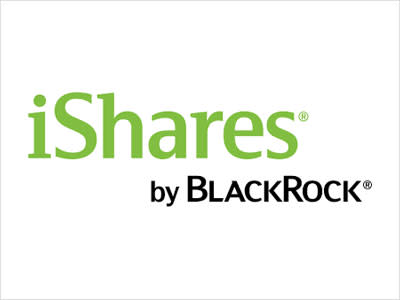BlackRock has been managing index portfolios since 1971
This ETF provides broad exposure to a mix of global corporate bonds
It’s a simple and low-cost way to track the Bloomberg Global Aggregate Corporate Bond Index
How it fits in a portfolio
An ETF is a basket of investments that often includes shares or bonds. They tend to track the performance of an index such as the Bloomberg Global Aggregate Corporate Bond Index and trade on stock exchanges, like shares. This means their price fluctuates throughout the day.
The iShares Global Corporate Bond ETF invests in investment grade bonds issued by companies in emerging and developed markets. Investment grade bonds are deemed to be more likely to pay off their debts than some higher-risk bonds, such as high yield bonds.
An ETF is one of the simplest and lowest-cost ways to invest. ETFs that track global corporate bonds could help diversify an investment portfolio focused on other assets, such as shares.
Manager
This ETF is managed by BlackRock’s Fixed Income Index team, which is led by John Hutson. Hutson has been at BlackRock for 14 years and has 24 years of experience in total. He previously had responsibility for Credit Index Investments within the team.
While Hutson leads the team, each ETF at BlackRock has a primary and secondary manager, though in practice the broader team helps to manage each ETF. Divya Manek is the Head of Investment Grade Credit and Emerging Market Debt and the lead portfolio manager on this ETF.
BlackRock also has other teams that trade shares and bonds based across the world. The teams function in different time zones, which means they have access to timely information, and can provide input on market trends and corporate actions. Their global approach helps drive efficient management of their funds, while providing simple and effective tracking options for investors.
Process
This ETF aims to track the performance of the Bloomberg Global Aggregate Corporate Bond Index (GBP Hedged). It does this by investing in a certain proportion of the bonds in the benchmark, but not all. This is known as partial replication, which could help the ETF track the index closely without incurring the cost of holding every bond. Bonds that make up a very small part of the index can be more difficult or expensive to buy and sell.
The ETF currently invests in 13,436 bonds issued by companies in sectors such as industrials, utilities and financials. Just over half of the ETF is invested in the US, with the next biggest investments in the UK, France and Canada. It also invests in some higher-risk emerging markets. Some of the top bond issuers in the ETF include companies like JPMorgan Chase, Bank of America and Morgan Stanley.
This is a currency hedged ETF which means the currency element of any overseas bonds are converted back to sterling. The prices and income of global bonds can go up and down with foreign currency movements, adding volatility for UK investors. By hedging, investors could experience less extreme price movements over time, which could help smooth potential returns. Although, currency hedging can be expensive and is done through derivatives which adds risk.
In any ETF, factors like taxes, dealing commissions and spreads, and the cost of running the ETF all drag on performance. To reduce the tracking difference between the ETF and the index, BlackRock cross trades bonds internally across all its own funds. This helps to reduce transaction costs.
The ETF can lend some of its investments to others in exchange for a fee in a process known as stock lending. This offsets some of the costs involved with running the ETF. Since BlackRock’s lending program started in 1981, only three borrowers with active loans have defaulted. In each case, BlackRock was able to repurchase every security out on loan with collateral on hand and without any losses to their clients. Even so, stock lending adds risk.
As this ETF is listed offshore investors are not usually entitled to compensation from the UK Financial Services Compensation Scheme.
Culture
BlackRock is currently the largest asset manager in the world, managing $12.5trn of assets globally. The company was founded by eight partners including current CEO Larry Fink and is known for both active and passive strategies. Employees at BlackRock are encouraged to hold shares in the company so that they are engaged with helping the company perform well and grow. The iShares brand represents BlackRock's family of index tracking and exchange-traded funds.
As the world's largest asset manager, and with lots of resource and knowledge under its belt, BlackRock benefits from unique access to the marketplace, which can help reduce trading costs. BlackRock is also a pioneer in the passive investment space and has a track record of innovation in this part of the investment market.
The team running this ETF also works closely with various fixed income and risk departments across the business. We believe this adds good support and challenge on how to run the ETF effectively.
ESG Integration
BlackRock was an early signatory to the Principles for Responsible Investment (PRI) and has offered Environmental, Social and Governance (ESG)-focused funds for several years, including through its iShares range of passive products. But it only made a company-wide commitment to ESG in January 2020. Following that announcement, the company promised to expand its range of ESG-focused ETFs, screen some thermal coal companies out from its actively managed funds and require all fund managers to consider ESG risks.
BlackRock’s Investment Stewardship Team aims to vote at 100% of meetings where it has the authority to do so. The Investment Stewardship team engages with companies, in conjunction with fund managers, and the results of proxy votes can be found on the BlackRock website’s ‘proxy voting search’ function.
BlackRock has courted controversy in recent years for failing to put its significant weight behind shareholder resolutions aimed at tackling climate change. It responded by committing to be more transparent on its voting activity and providing rationales for key votes.
BlackRock raised further concerns in 2022 when it indicated it might support fewer shareholder proposals based on environmental and social issues in the future. But its support for shareholder resolutions has fallen dramatically, from 40% in 2021 to just 4% in 2024. BlackRock argues that many of the resolutions were overreaching, lacked economic merit or didn’t promote long-term shareholder value, but this reasoning has been met with some scepticism.
In 2024, BlackRock announced that its US arm would step back from the Climate Action 100+ collective engagement initiative, citing legal considerations, although it suggested its international arm would remain a member.
The iShares Global Corporate Bond ETF tracks an index that doesn’t specifically integrate ESG considerations or exclude bonds issued by companies in certain industries, like those involved with tobacco or weapons.
Cost
The ETF currently has an ongoing annual fund charge of 0.25%. Ensuring an ETF has a low charge is an important part of tracking the underlying index closely.
The annual charge to hold ETFs in the HL Stocks & Shares ISA or SIPP is 0.45% and in the HL Lifetime ISA is 0.25% (capped at £45 in the ISAs and £200 in the SIPP). There are no charges from HL to hold ETFs within the HL Fund and Share Account or HL Junior ISA.
As ETFs trade like shares, both a buy and sell instruction will be subject to the HL share dealing charges.
Performance
Since this hedged ETF launched in March 2018, it’s tracked its benchmark well, returning 12.66%*. As expected from an ETF, it’s fallen behind the benchmark over the long term because of the costs involved in running it. However, the tools used by the managers have helped to keep performance tight to the index.
Over the last 12 months, the ETF has tracked the index closely, rising 4.97%. Remember, past performance isn’t a guide to future returns.
With inflation on a downward trend globally, central banks were able to start lowering interest rates in 2024. The European Central Bank was among the first to cut rates in June, followed by the Bank of England in August and the US Federal Reserve in September. Usually, when interest rates are cut, bond yields fall, and prices rise.
But bond yields increased at the end of the year, and prices fell, even though most central banks continued to lower rates. This was driven by the view that Trump’s policies, especially on tariffs, have the potential to disrupt trade and push inflation higher. Bond markets moved as a result to expect fewer interest rate cuts.
So far in 2025, bond markets have been volatile due to the unknown impact of Trump’s tariffs and inflation remaining above target. Interest rate cuts are still expected but most central banks are taking a gradual approach.
At the end of July 2025, the ETF’s yield was 3.93%. Yields aren’t guaranteed and shouldn’t be considered a reliable indicator of future income.
Given BlackRock's size, experience and expertise running ETFs, we expect the ETF to continue to track the index well in future, though there are no guarantees. As the currency of overseas bonds is hedged back to sterling, we expect the ETF’s performance to be less volatile over time compared to an equivalent unhedged ETF.
Annual percentage growth
Jul 20 – Jul 21 | Jul 21 – Jul 22 | Jul 22 –Jul 23 | Jul 23 – Jul 24 | Jul 24 – Jul 25 | |
|---|---|---|---|---|---|
iShares Global Corporate Bond ETF | 1.86% | -11.63% | -2.61% | 6.90% | 4.97% |


